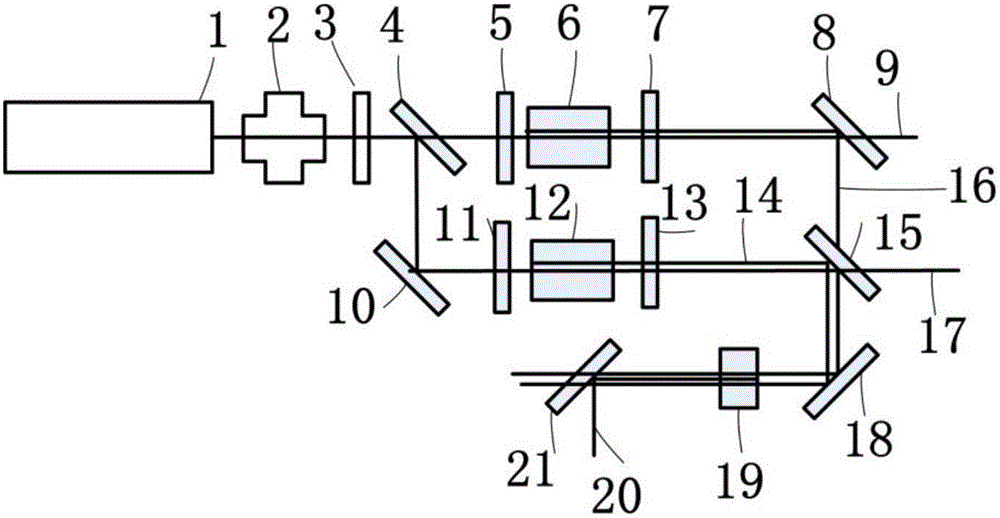589 nm laser based on raman frequency conversion and laser sum frequency
A 589nm, laser technology, used in lasers, laser parts, phonon exciters, etc., can solve the problems of high cost and complex structure of output sodium yellow light, and achieve the effect of simple structure, easy integration, and easy control of optical characteristics
- Summary
- Abstract
- Description
- Claims
- Application Information
AI Technical Summary
Problems solved by technology
Method used
Image
Examples
Embodiment 1
[0030] see figure 1 , figure 1 It is a structural schematic diagram of Embodiment 1 of a 589nm laser based on Raman frequency conversion and laser sum frequency in the present invention. As shown in the figure, the 589nm laser based on Raman frequency conversion and laser sum frequency in the present invention includes a 1064nm laser source 1 and a Faraday isolator 2 , one-half glass slide 3, light splitting element 4, front cavity mirror 5 of the first Raman resonant cavity, KGW crystal 6, rear cavity mirror 7 of the first Raman resonant cavity, first filter lens 8, first reflector Mirror 10, the front cavity mirror 11 of the second Raman resonator, the BN crystal 12, the rear cavity mirror 13 of the second Raman resonator, the second filter mirror 15, the second reflection mirror 18, the nonlinear crystal 19 and the third filter lens 21, the laser beam emitted by the 1064nm laser source 1 passes through the Faraday isolator 2 and the half glass slide 3 in turn, and is divid...
Embodiment 2
[0034] The structure of Embodiment 2 differs from Embodiment 1 in that the beam splitter 4 is replaced by a polarization beam splitter prism, the nonlinear crystal 19 is a KDP crystal, and the cutting angle is 58.5°. Since the 1159nm laser 16 and the 1197.8nm laser 14 have different polarization states, they satisfy the type II phase matching condition.
PUM
 Login to View More
Login to View More Abstract
Description
Claims
Application Information
 Login to View More
Login to View More - R&D
- Intellectual Property
- Life Sciences
- Materials
- Tech Scout
- Unparalleled Data Quality
- Higher Quality Content
- 60% Fewer Hallucinations
Browse by: Latest US Patents, China's latest patents, Technical Efficacy Thesaurus, Application Domain, Technology Topic, Popular Technical Reports.
© 2025 PatSnap. All rights reserved.Legal|Privacy policy|Modern Slavery Act Transparency Statement|Sitemap|About US| Contact US: help@patsnap.com


